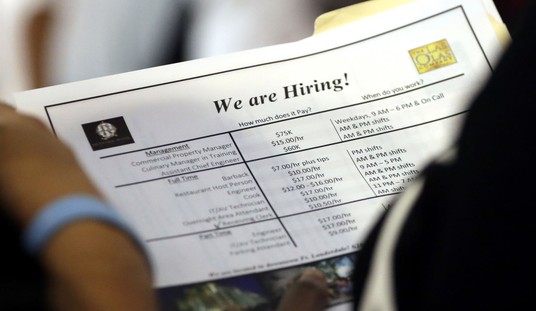Texas faces a massive budget shortfall in the next biennium (somewhere between $15 and $25 billion), and the state’s options are limited by court decisions (K-12 education) and federal mandates (health care). The budget axe will fall disproportionately in the area of higher education. This juncture provides both great opportunities and great perils for the Texas Republican Party. If the Republican legislature simply cuts the higher education budget, without further changes, the university bureaucracies will make the cuts as painful to students as possible, counting on a political backlash from students, parents, and alumni. The GOP could lose the support of an entire generation of youth, perhaps forever.
There is an alternative scenario, however. Republicans could use this budget crisis as a triple opportunity: saving both taxpayers and students billions of dollars, while empowering students to improve their own education by greatly expanding their freedom of choice. By creating a true free market for education within existing universities, our state leaders can harness the power and efficiency of the market to dramatically improve education while eliminating waste and abuse. We can thereby improve access and increase the number of students completing a meaningful degree.
The following twenty reforms would revolutionize higher education in Texas, bringing it out from the centralized, bureaucratic mass-production model of the early 20th century and into a new world of entrepreneurial responsiveness to demand. The first six reforms constitute a single, inter-dependent whole: the Entrepreneurial Professor Model. The remaining fourteen further extend the spirit of the free market, transparency, and public accountability. Each can be implemented incrementally.
The Entrepreneurial Professor Model
1. Tie the salaries of professors and lecturers to the number of students they attract to their classes.
(a) We start with a living wage ($30K) plus benefits.
(b) Any additional salary comes in the form of a tuition-based bonus, representing a fixed percentage (say, 50%) of the tuition income generated by students enrolled in the teacher’s classes, up to a maximum of 320 students per year (960 student-hours). Each instructor may teach up to eight classes per year. Professors engaged in research may derive additional income from their externally funded grants.
2. Tie the salaries of the administrators of colleges, departments, and centers to a fixed percentage (4%) of the tuition income generated by the unit’s total enrollment.
3. Empower both individual professors and colleges and departments to rebate tuition directly to their students, with the costs of the rebates deducted from the salary bonuses of the professors and administrators. In this way, we introduce real price competition between colleges, departments, and professors: all will offer lower tuition rates in order to attract larger numbers of students.
4. Empower professors to hire individual teaching assistants for their courses, with the salaries of the assistants fixed by negotiation and subtracted from the professors’ bonuses. Thus, professors will be competing with one another both for students’ tuition dollars and for talented assistants, with the market determining the tuition rate for each course and the salary for each assistant.
5. Empower each professor to choose which courses within his or her field to teach each semester, and to set enrollment limits, in order best to meet student demand.
6. Apply a fixed grading curve (no more than 15% As, 50% As and Bs, 85% As, Bs and Cs) to all undergraduate courses. Professors whose grades deviate from the curve will lose a corresponding share of their tuition-based bonuses (i.e., they lose the bonus for each student whose grade exceeds the curve). This provides a powerful incentive to eliminate grade inflation and raise academic standards. The higher standards will in turn transform the campus culture, replacing partying with studying. A limited number of honors sections (with students whose grades and scores are a full standard deviation above the average) could be exempted.
Zeroing Out the Direct Appropriations to State Colleges and Universities.
7. Completely eliminate all direct subsidies from the state to colleges and universities (a savings of $17 billion per biennium). In their place, we increase scholarships and college-loan subsidies that go directly to students, and that can be used at any state-certified institution of higher education. This empowers students to choose the college or university that best meets their needs, whether public or private, secular or religious, non-profit or for-profit.
Restore Guaranteed College Loans from Private Lenders
8. The Pelosi-Reid Congress abolished federally guaranteed college loans from private lenders, replacing them with a federal monopoly. This provides Texas with the opportunity to create a competing system of state-guaranteed loans. We can prevent brain drain by limiting the subsidy to those who remain in the state after graduation.
Redirecting the Permanent University Fund
9. Redirect income from the PUF to provide direct aid to students, instead of the present subsidy of “bricks and mortar” exclusively. The present system results in wasteful over-production of under-used infrastructure, instead of improving the quality of instruction. In order to ensure the efficient use of existing structure, state universities should pay the state a fair market rent for all building constructed with PUF funds.
Chartering Colleges
10. In order to increase competition within the universities, empower the governor to grant college charters both to non-profit groups and to for-profit companies to operate on state campuses. The charter colleges hire their own administrators, teachers, and advisors and offer courses to students on their host university’s campus. The host university must provide the charter college with fair access to scheduled classroom space and must offer enrollment in the charter college’s courses through the normal course registration procedure. A fixed percentage of the tuition generated by enrollment in the charter college’s courses will be paid to that college.
End Selective Undergraduate Admission
11. Require all state universities to admit all and only resident students meeting a set of minimum qualifications. The flagship universities could easily accommodate twice as many undergraduates as they are now serving through a more efficient use of their resources: early morning, evening, and weekend classes, greater use of online and self-paced courses. We could also send freshmen to campuses other than Austin and College Station. Citizens of Texas have a right to attend the state undergraduate college of their choice.
Abolition of Tenure and the Tenure Track
12. Abolish tenure, and, more importantly, thereby abolish the distinction between tenure-track positions (assistant, associate, and full professors) and non-track positions (lecturers, adjunct professors, and other instructors). Each department and college must afford equal representation and voting rights to all instructors, whether full or part-time. All instructors will be offered a fixed-term, renewable contract, and all will have an equal say in making recommendations for hiring, promotion, and continuation. This ends the inequity of paying so much more to those who teach so much less.
Abolition of the Texas Higher Education Coordinating Board
13. Eliminate the Texas Higher Education Coordinating Board, which simply adds another layer of bureaucratic complexity between state colleges and useful reforms. This frees universities to create innovative degree programs in response to student and employer demand. At the very least, we must limit the Coordinating Board’s role to a single function: certifying non-accredited institutions as qualifying for state aid to their students (see #14).
Breaking the Monopoly of the Accrediting Agencies
14. Create a statewide mechanism that qualifies institutions for state aid to their students, as an alternative to federallycontrolled “accreditation.” The regional accrediting bodies, such as SACS (the Southern Association of Colleges and Schools), act as cartels run by existing colleges and universities, designed to block meaningful reform or competition. They are simply monopolies, created and sustained by federal power, denying federal aid to students in non-accredited institutions. The Obama administration is using this power to drive for-profit colleges from the market, protecting established colleges from effective competition. We Texans need to provide our own, independent assessment of colleges, one that opens up the market to more competition and innovation.
Rationalizing Graduate Education
15. Close down all graduate and professional programs at state colleges whose students fall below an 80% threshold for completing the degree and finding appropriate employment, disqualifying them for state scholarships and guaranteed loans.
Abolition of the Core Curriculum
16. Abolish entirely the state’s 42-hour core curriculum. The existing “core” is in truth no core at all, but merely a set of distribution requirements that are parceled out on each campus to politically favored colleges and departments. The state’s requirements in government and American history have exactly the opposite effect from the one the legislature intended: far from making our students better informed and wiser citizens, the core requirements simply turn them into captive audiences, subjected to indoctrination by ideological professors. Far better to abolish the whole structure and free students to direct their own education. In place of the 42-hour core, we should require every bachelor’s program at any state university to afford each student at least 42 hours of free electives.
Reviving the Study of Ethics and Leadership
17. Mandate that every state college adopt as part of its core mission the development of moral character and conscience: through an honor code, through traditions and celebrations, and through offering courses that focus on universal moral principles and ideals as represented in the great books of world civilization.
Full Financial Transparency
18. Provide the public with full online access to every dollar spent by every unit at every state college, even where public and private money is commingled. In addition, the class schedules must delineate precisely the number of dollars per student spent for the salaries of that course’s instructors.
Third-Party Assessment of Student Learning
19. Require every state college to provide third-party assessment of its students’ progress in meeting its stated educational objectives. These could take a variety of forms, including everything from standardized tests to the evaluation of portfolios of student work. The assessors should be anonymous and independent. Results of these assessments must appear on the student’s official transcript, and an analysis of the value-added by each academic program, and by each individual course and instructor, must be made available to the public on-line.
These reforms would save the taxpayers billions of dollars, while both lowering tuition for nearly all students and increasing the quality of education, by introducing the miracle of the free market and real competition. If students are given the power to vote with their feet, colleges and professors will respond by raising the quality of the courses of instruction that are offered. By empowering students to direct the resources through their own choices, we can ensure that quality rises while costs are kept in balance.
Replies to Objections
1. “These reforms will cause our universities to lose their most prestigious professors, resulting in their falling in national rankings. The loss of prestige will hurt Texas students in their pursuit of good jobs and admission to selective graduate and professional schools.”
Any drop in meaningless ratings will be more than compensated for by improved instruction and higher academic standards. The professors we may lose will be those who are overpaid, underworked, and either uninterested or unskilled in undergraduate teaching. Professors able to attract students through the excellence of their teaching and their scholarly reputation will be able to earn even more than they can under the present system.
Supposed prestige alone is no guarantee of success. California and Michigan have the most prestigious state universities in the nation, but this has not prevented economic meltdown and political dysfunction. To the contrary, the unchecked ideologies of prestigious faculty in those states have contributed to their downfall.
2. “Students are not wise or informed enough to make the right choices in selecting courses and professors. The university faculties must retain the power of offering the right mix of courses and instructors to their students.”
In an ideal world, such professorial paternalism might make sense. In the real world, the faculties of our state colleges have misused this power in order to reduce their teaching load and redirect their teaching toward narrow research specialties, sacrificing the students’ good to their own professional interests. The existing system does not in fact provide students with any meaningful guidance: requirements are few, and students are given thousands of courses to choose from each semester. The problem with the present system isn’t the number or variety of choices it offers to students, but their quality. Students have plenty of choice, but it is a toothless choice, choice without power. We must make the resources follow the students, instead of forcing students to chase the resources they need to graduate.
3. “The existing core curriculum ensures that every student receives a broad education in mathematics, natural science, social science, the arts and the humanities. Students cannot be trusted to seek out such breadth on their own.”
The system ensures breadth of a kind, but the actual course offerings satisfying the distribution requirements lack any kind of unity or coherence. At best, they encourage a kind of superficial dilettantism. At worst, they provide students with a meaningless potpourri of isolated and over-specialized classes. The core curriculum results in cynical political deals among colleges and departments, with students treated as a resource to be distributed rather than a constituency to be served.
4. “Accreditation protects students and taxpayers from fraudulent, fly-by-night degree mills. The accrediting bodies ensure that every college follows ‘best practices.'”
Some sort of certification is needed, but giving the exclusive power of accrediting to associations that are created and run by the colleges and universities themselves ensures that the accreditation mechanisms will be used to protect the existing system from meaningful competition.
5. “Tenure is needed a bulwark of academic freedom, protecting independent scholars from reprisals by politically motivated administrators and regents.”
The college campus is today the most unfree segment of our society. Political correctness enforces a rigid orthodoxy and effectively suppresses dissent. The real danger to academic freedom today comes from faculty governance: a tyranny of the majority, of the kind the Federalist Papers and John Stuart Mill warned us against.
A market-based system will guarantee real, effective freedom of thought and discussion. The market will reward professors who are effective teachers, regardless of their political orthodoxy or unorthodoxy. Administrators whose salaries are tied to meeting student demand instead of the approval of academic peers will be less, rather than more, likely to allow political considerations to influence their decisions.
6.”This is a radical and untested set of reforms.”
To the contrary, the proposals simply use the system we all rely upon every day to supply us with food, shelter, and other necessities: the free market, the most successful economic arrangement in history. The present system relies upon a centrally planned, bureaucratically managed methods that have failed miserably time and time again and are failing us once more.









Join the conversation as a VIP Member